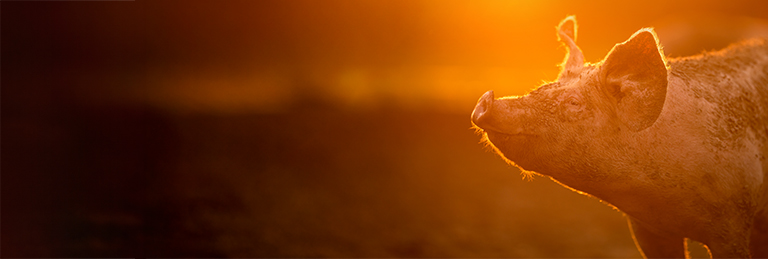The "DLG Agrifuture Concept Winner" award scheme premiering in 2022 focuses on solutions that can provide decisive impetus for the future viability of livestock farming and the decentralised supply of energy. With this new award, the DLG is following its objective to present not only market-ready products at its leading international trade fairs, but also groundbreaking impulses for the future of global livestock farming and decentralized energy supply.
DLG-Agrifuture Concept Winner 2022
Modular future cowshed
Wilhelm Kristen GmbH
Hall 21, stand C41
Conventional dairy barns involve high investments in construction materials. This is often due to individual planning, which is usually carried out top-down starting from the barn building, into which additional elements such as the ventilation system, barn installations and milking technology, etc. are then fitted.
The modular future cowshed concept from Wilhelm Kristen GmbH rethinks barn construction from the bottom up, focusing on maximum cow comfort and work efficiency, a simple and natural ventilation system and the simplest substructure possible based on the needs of the animals, employees and farm managers.
The modular design of the barn concept is aimed at robotic milking. Feeding is carried out using either a feed mixer wagon or a trough solution with a feed belt; a scraper or a robot solution is available for manure removal. In the building, some of the barn installations such as the cubicle and feeding space dividers also serve as the substructure for the roof construction. Since this construction method requires very few foundations, the amount of concrete work needed is reduced dramatically. This leads to lower construction costs and a shorter construction time, while increasing transparency and visibility in the building at the same time. The necessary cross-ventilation in the building is ensured by a gable with a chimney as well as the option of being able to open both of the side walls up to a height of 2.50 meter. All of the roofing options usually found on the market are available, up to and including green roofs or the installation of a photovoltaic system.
The modular barn system enables construction costs to be reduced by around 20-25 percent compared to conventional solutions. By focusing on the needs of the cows and with the optimized workflow that the building ensures in any case, the system increases efficiency during daily work in the barn at the same time. It thereby helps to ensure and improve the economic success of the farm following an investment of this magnitude.
Lely Exos
Lely Deutschland GmbH
Hall 13, stand B44
Harvesting green fodder is one of the most important operations in dairy farming. High-quality green fodder that is usually produced on one's own land extensively determines the quality of the feed rations or the necessity of having to supplement them with concentrated and mineral feeding stuffs. The green fodder is therefore the basis for profitable milk production and is essential to the health of the animals.
With Exos, Lely is presenting a concept for the fully autonomous harvesting and feeding of fresh grass. Green feeding throughout the vegetation period offers multiple advantages. For instance, the loss of energy due to the silaging process is eliminated, as is that part of the harvesting costs caused by the fact that successful silaging necessitates the achievement of high mowing, tedding, swathing and chopping efficiency even during time slots that are tight because of weather conditions. The fully electric Lely Exos provides the daily green fodder ration for the entire herd autonomously. The robot detects obstacles and navigates smoothly in the interior and exterior area. It is also possible to spread fertilizer during harvesting. Thanks to this and because mowing takes place at the right point in time, quick regrowth of the grassland is promoted and the soil is protected due to the comparatively low weight of the machine.
This enables the farm to benefit fully from the use of the entire vegetation period, to produce more milk from feed it has produced itself, and thereby to reduce labor, the number of machines needed and the purchase of additional feeding stuffs.
Havito – Birth to Finish
Big Dutchman International GmbH
(with: Bröring GmbH & Co. KG)
Hall 17, stand B22
Modern sty systems in pig production are based on evolution towards increased efficiency and labour productivity by increasing biological performance. In the future, animal welfare aspects will play a significantly greater role. This means that processes and concepts will have to be redefined or adapted to increased animal welfare without taking a step backwards in terms of efficiency or employee accident protection, for instance.
A structured pen, in which the sow can give birth and the piglets remain throughout the entire rearing and fattening period without being relocated, is now being presented for the first time in the form of the Havito – Birth to Finish concept from Big Dutchman International GmbH and Bröring GmbH & Co. KG. The system is based on the PigT pig toilet concept introduced in 2018 for use in rearing and fattening, which has now also been extended to include sows. Thanks to the closed surface of the whole pen and the continuous separation of urine and faeces, the entire pen can be littered with organic material, and the pigs themselves subdivide it into a lying area, a manipulation area and a toilet area. This is supported through a micro-climate solution and optionally with heating and cooling options in the floor.
The concept is designed for a 21-week cycle from birth to slaughter, including a 5-6-week suckling period and a 15-week rearing/fattening phase. The piglets born in the pen remain there throughout their entire lives, whereby the concept also takes the growing animals' increasing spatial requirements into consideration. The sow, too, will always give birth in the same sty. The piglets learn from their mother how to find food; the feeding place remains the same throughout their lives. Elements required for the piglets' birth in the open farrowing pen area can be folded up during rearing.
The increasing implementation of animal welfare aspects is one of the biggest drivers of structural change in animal production worldwide, and will have a particular impact on facilities for pigs due to their historic evolution. The Havito Birth-to-Finish husbandry concept is an interesting and smart answer to future challenges.







